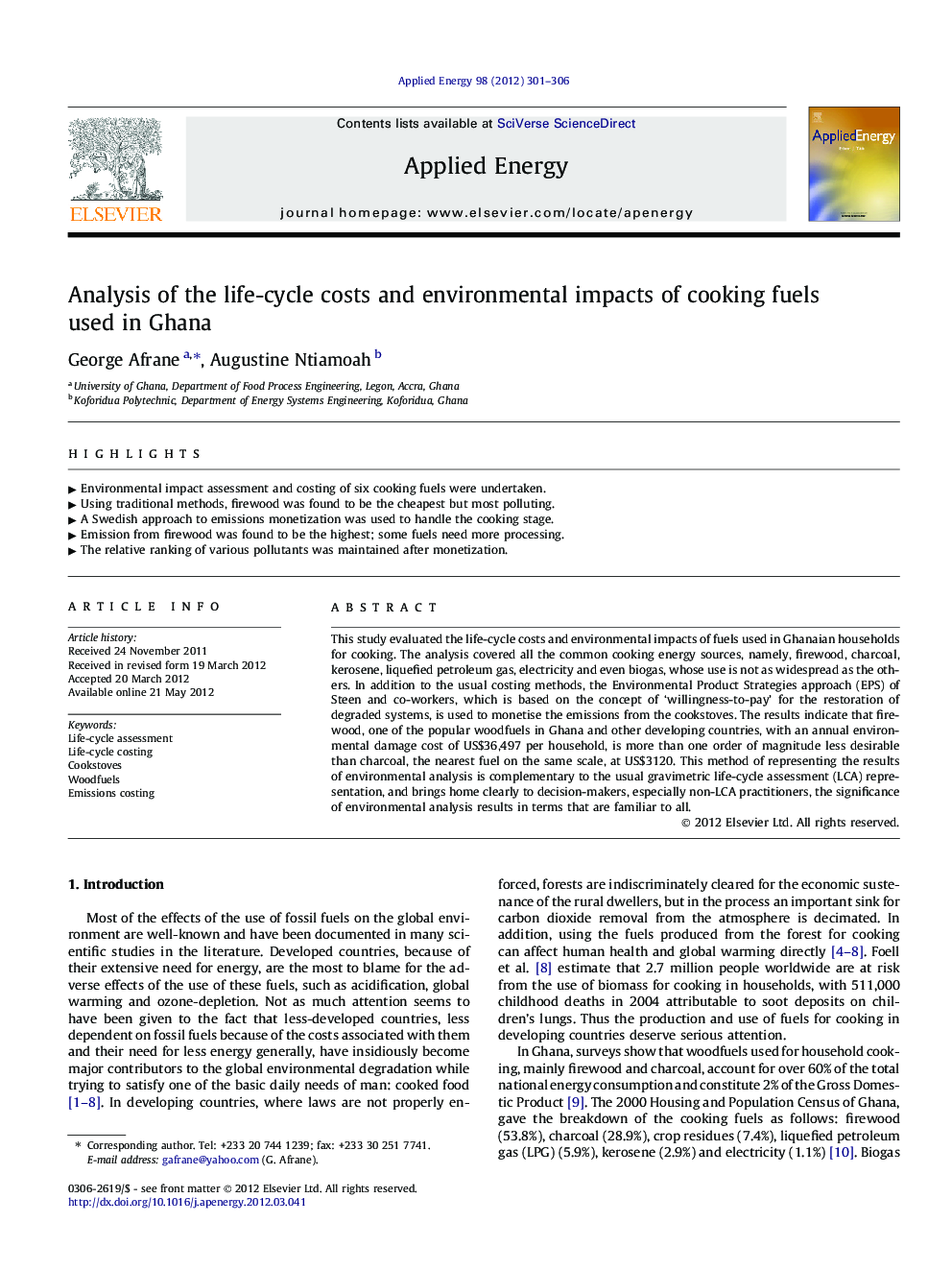| Article ID | Journal | Published Year | Pages | File Type |
|---|---|---|---|---|
| 243214 | Applied Energy | 2012 | 6 Pages |
This study evaluated the life-cycle costs and environmental impacts of fuels used in Ghanaian households for cooking. The analysis covered all the common cooking energy sources, namely, firewood, charcoal, kerosene, liquefied petroleum gas, electricity and even biogas, whose use is not as widespread as the others. In addition to the usual costing methods, the Environmental Product Strategies approach (EPS) of Steen and co-workers, which is based on the concept of ‘willingness-to-pay’ for the restoration of degraded systems, is used to monetise the emissions from the cookstoves. The results indicate that firewood, one of the popular woodfuels in Ghana and other developing countries, with an annual environmental damage cost of US$36,497 per household, is more than one order of magnitude less desirable than charcoal, the nearest fuel on the same scale, at US$3120. This method of representing the results of environmental analysis is complementary to the usual gravimetric life-cycle assessment (LCA) representation, and brings home clearly to decision-makers, especially non-LCA practitioners, the significance of environmental analysis results in terms that are familiar to all.
► Environmental impact assessment and costing of six cooking fuels were undertaken. ► Using traditional methods, firewood was found to be the cheapest but most polluting. ► A Swedish approach to emissions monetization was used to handle the cooking stage. ► Emission from firewood was found to be the highest; some fuels need more processing. ► The relative ranking of various pollutants was maintained after monetization.
